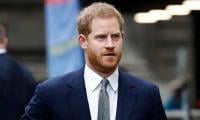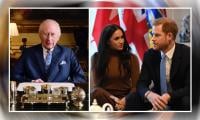Ehsaas, sports and SDGs
Despite its 130th ranking out of 162 countries, Pakistan was among the first few to adopt the Sustainable Development Goals (SDGs) as part of its national development agenda through a National Assembly resolution in February 2016. The National Economic Council approved the comprehensive National SDG frame work in March 2018.
The Ehsaas strategy has been chalked out by Dr Sania Nishtar, the brilliant health activist, who has a global recognition due to her selfless work and who is now the advisor to Prime Minister on social sector reforms.
The Ehsaas strategy contains 115 policy actions and can be further expanded during consultative process. This is perhaps the best and most foresighted initiative of the government during the last one year. The programme aims to expand social protection and safety nets and support human capital development.
The biggest challenge for Dr Sania, however, would be to find reliable implementation partners which is vital for sustainability of Ehsaas programme as a long-term intervention in alignment with the Global Sustainable Development Agenda of 2030.
Pakistan unfortunately has a history of approaching and delivering the development initiatives in an inconsistent and intermittent manner. Be it the Social Action Programme of ‘90s or the Mid Term Development Frame Work launched in 2005 or the well-thought out National Commission for Human Development (NCHD) initiative of General Pervaiz Musharraf, the overall performance remains patchy because of lack of singular vision and aversion to out-of-the-box solutions.
Pakistan sports are being managed by leaders who lack knowledge and experience to relate sports with development agenda of the country. Despite being rich in human and natural resources, we missed most of the targets spelled in the previous Millennium Development Goals (MDGs).
It is strange that a country where people donate billions of rupees each year in charity has a poor development record.
In the past three years, Pakistan has been slipping on international development ladder. Pakistan was ranked 115th on the index in 2016, slid to 117th in 2017, slipped further to 122nd in 2018, and stood 130th in 2019 out of 162 in Human Development Index.
This all is happening because of vested interests of well-entrenched elite which doesn’t allow any out-of-the-box solutions that can assist in propelling a holistic and inclusive development agenda in Pakistan.
Sports for Development offers out-of-the-box, yet very practical and interesting solutions for attainment of SDGs. Thus, it can support Ehsaas programme of PTI in achieving various objectives.
Sports, because of global reach, universal language and impact on communities, bring out instant change in values and behaviour.
The fundamental role of sports as a means to promote education, health, development and peace, was emphasised in UN Resolution A/69/L-5 adopted by member states including Pakistan on October 16, 2014.
The resolution encourages member states to give sports due consideration in the context of the post-2015 development agenda.
The International Olympic Committee (IOC) is advocating the use of sports for promoting health and prevention of non-communicable diseases, achieve quality education through value-based learning, promote gender equality, promote sustainable cities and human settlements, and develop human capital and potential.
Research demonstrates that physical and sports education provides playful environment to children, thus promote school attendance, reduces capital punishment and make education an enjoyable experience for the children.
It also boosts mental health and helps in achieving academic excellence. Sports are a powerful vehicle to teach children and youth positive attitudes.
If sports and physical education are integrated into Ehsaas programme in offering quality education at grassroots, it will help Ehsaas in making education interesting and acceptable and also assist the national sports sector in promoting sports education in education institutions, which has been neglected for several years.
All member states of World Health Organization (WHO) have committed to reducing physical inactivity by 10 percent by 2025.
In China, India, the UK, Brazil, Russia and the US, the cost of physical inactivity is more than $218 billion and is projected to reach $302 billion by 2030. If this trend continues almost half of the world’s adult population is likely to be obese by 2030.
The situation in Pakistan is even more alarming, where there is hardly any health education and effective control over enormously growing population.
If we continue to grow with present speed, no amount of finances will be able to solve our health issues. The dengue outbreak in the country is an eye-opening example. We have not been able to address the issue effectively due to lack of health awareness among masses.
Sports is a very effective way to reach people, especially youth, for encouraging healthy lifestyle. It helps reducing healthcare costs and increases productivity which are the key issue of emerging economies.
Sports ground and venues are safe and neutral spaces where women can also discuss their reproductive health issues.
Sports and physical activity in development paradigm demands a population-based, multi-sectoral and cultural-relevant approach. It should be incorporated in urban and town planning and environmental policies at national and local level. There is a need to relate it in education & health policies.
sdfsports@gmail.com
-
 Brooklyn Beckham Finds It 'hard' To Keep Contact With Sister Harper
Brooklyn Beckham Finds It 'hard' To Keep Contact With Sister Harper -
 New Mystery About 'Ring Nebula' Shock Astronomers: Here's Why
New Mystery About 'Ring Nebula' Shock Astronomers: Here's Why -
 Prince Harry Picks PR Photos In Fear Of ‘bald Spots’
Prince Harry Picks PR Photos In Fear Of ‘bald Spots’ -
 Saying Prince Harry Will ‘probably Be Fine Isn’t Good Enough’, Expert Speaks Out
Saying Prince Harry Will ‘probably Be Fine Isn’t Good Enough’, Expert Speaks Out -
 Inside Meghan Markle’s Plans ‘With Love, Meghan’: Season 3 And Valentines Day Specials
Inside Meghan Markle’s Plans ‘With Love, Meghan’: Season 3 And Valentines Day Specials -
 King Charles Gets Caught Between A Rock And A Hard Place For The Second Time With Harry
King Charles Gets Caught Between A Rock And A Hard Place For The Second Time With Harry -
 Dolly Parton Hints At More Music As She Marks 80
Dolly Parton Hints At More Music As She Marks 80 -
 Simu Liu Reveals How His Family Treated Him After He Started Acting
Simu Liu Reveals How His Family Treated Him After He Started Acting -
 Gwyneth Paltrow Mourns Valentino As She Calls His Death 'end Of An Era'
Gwyneth Paltrow Mourns Valentino As She Calls His Death 'end Of An Era' -
 Prince Harry Questioned Over Desires Of Becoming ‘next King’
Prince Harry Questioned Over Desires Of Becoming ‘next King’ -
 Three-year-old Allegedly Tortured, Killed During Exorcism In California Church
Three-year-old Allegedly Tortured, Killed During Exorcism In California Church -
 Blake Lively Gushes She And Ryan Reynolds Are 'partners In Everything'
Blake Lively Gushes She And Ryan Reynolds Are 'partners In Everything' -
 Teyana Taylor Reflects On Co-parenting Journey With Ex Iman Shumpert
Teyana Taylor Reflects On Co-parenting Journey With Ex Iman Shumpert -
 Blake Shelton Recalls Being 'nervous Wreck' On Adam Sandler Film
Blake Shelton Recalls Being 'nervous Wreck' On Adam Sandler Film -
 Prince Harry's Lawyer Tells Court Daily Mail Complicit In Unlawful Acts
Prince Harry's Lawyer Tells Court Daily Mail Complicit In Unlawful Acts -
 Meghan Markle Named In Epstein Files With Ghislaine Maxwell?
Meghan Markle Named In Epstein Files With Ghislaine Maxwell?



